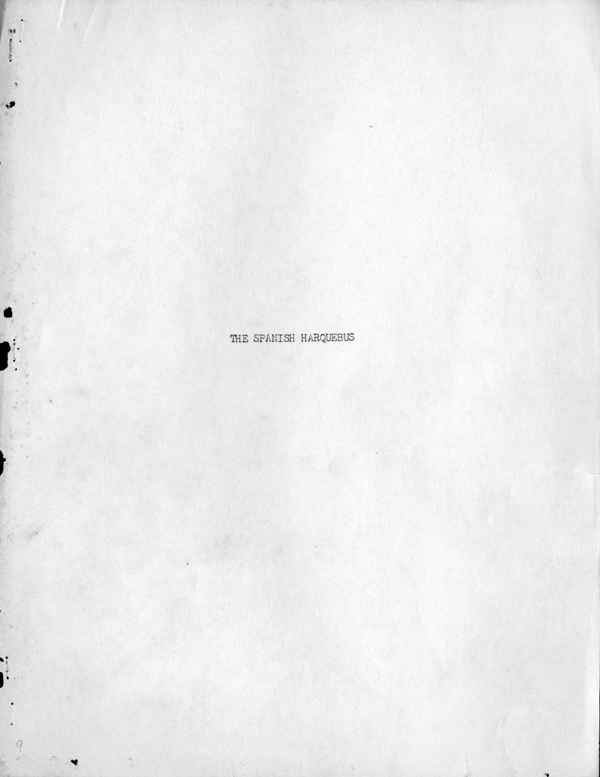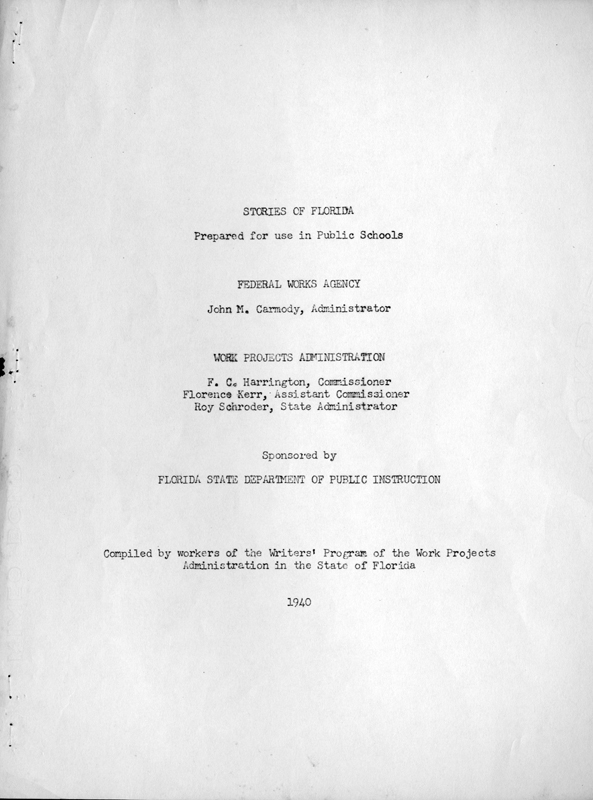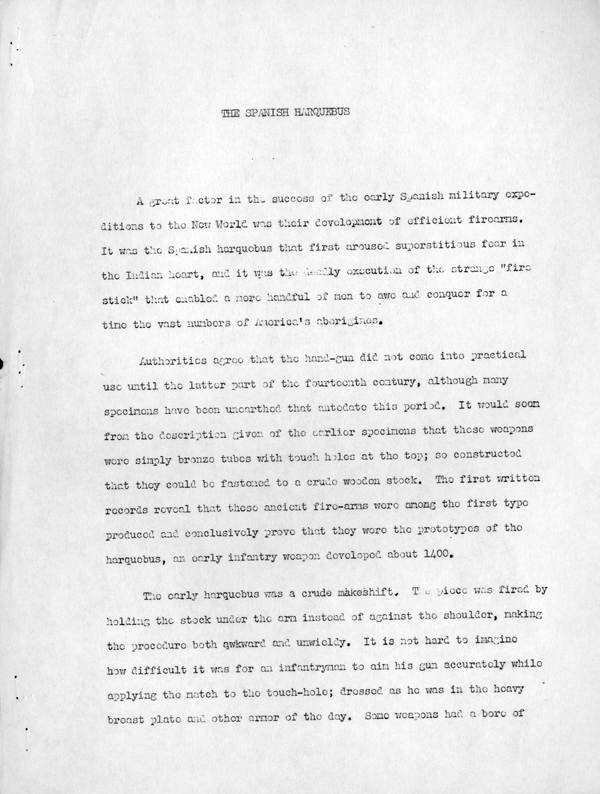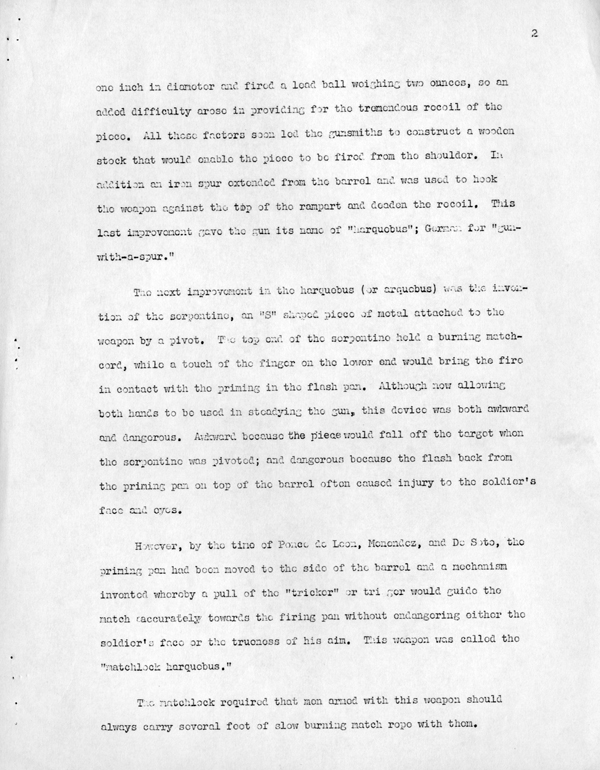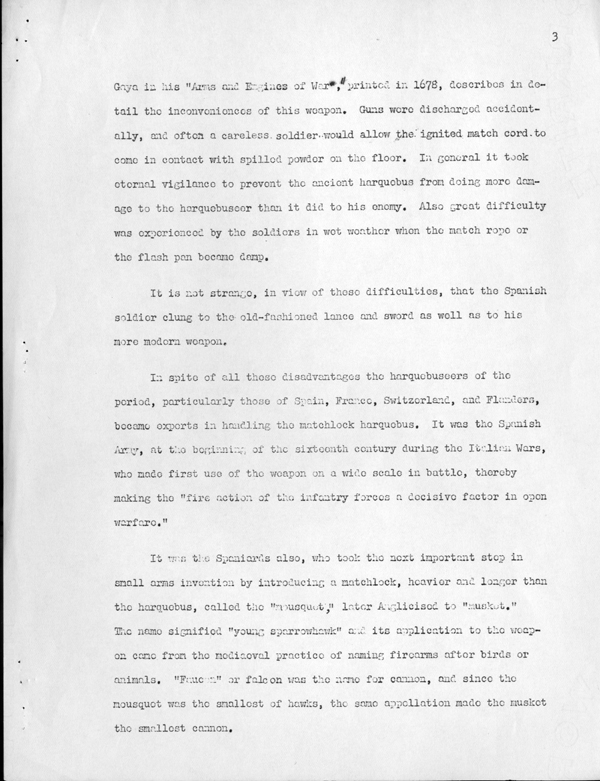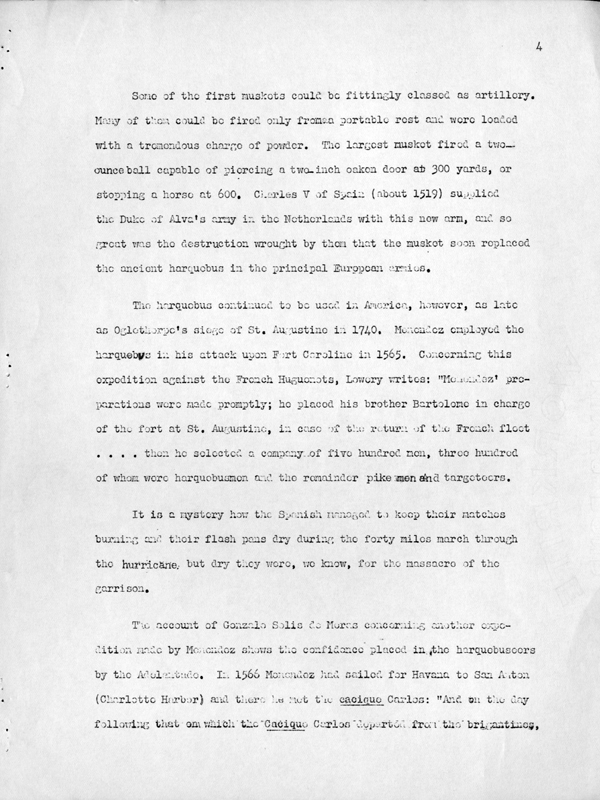Florida Memory is administered by the Florida Department of State, Division of Library and Information Services, Bureau of Archives and Records Management. The digitized records on Florida Memory come from the collections of the State Archives of Florida and the special collections of the State Library of Florida.

State Archives of Florida
- ArchivesFlorida.com
- State Archives Online Catalog
- ArchivesFlorida.com
- ArchivesFlorida.com
State Library of Florida
Related Sites
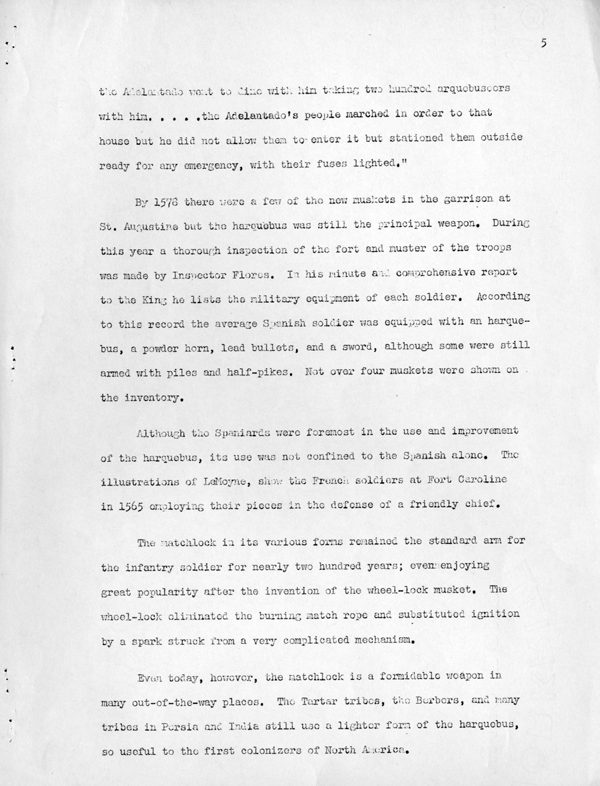
Description of previous item
Description of next item

Title
Published Date
the Adelantado went to dine with him taking two hundred arquebuseers with
him. . . . .the Adelantado's people marched in order to that house but he did
not allow them to enter it but stationed them outside ready for any emergency,
with their fuses lighted."
By 1578 there were a few of the new muskets in the garrison at St.
Augustine but the harquebus was still the principal weapon. During this
year a thorough inspection of the fort and muster of the troops was made
by Inspector Flores. In his minute and comprehensive report to the King he
lists the military equipment of each soldier. According to this record the
average Spanish soldier was equipped with a harquebus, a powder horn,
lead bullets, and a sword, although some were still armed with piles and
half-pikes. Not over four muskets were shown on the inventory.
Although the Spaniards were foremost in the use and improvement of
the harquebus, its use was not confined to the Spanish alone. The illustrations
of LeMoyne, show the French soldiers at Fort Caroline in 1565 employing
their pieces in the defense of a friendly chief.
The matchlock in its various forms remained the standard arm for the
infantry soldier for nearly two hundred years; even enjoying great popularity
after the invention of the wheel-lock musket. The wheel-lock eliminated the
burning match rope and substituted ignition by a spark struck from a very
complicated mechanism.
Even today, however, the matchlock is a formidable weapon in many
out-of-the-way places. The Tartar tribes, the Berbers, and many tribes in
Persia and India still use a lighter form of the harquebus, so useful to the first
colonizers of North America.
Title
Subject
Description
Source
Date
Contributor
Format
Language
Type
Identifier
Published Date
Image URL
Thumbnail
Transcript Path
Image Path
Image Path - Large
Chicago Manual of Style
The Spanish Harquebus. 1940. State Archives of Florida, Florida Memory. <https://www.floridamemory.com/items/show/181539>, accessed 17 December 2025.
MLA
The Spanish Harquebus. 1940. State Archives of Florida, Florida Memory. Accessed 17 Dec. 2025.<https://www.floridamemory.com/items/show/181539>
AP Style Photo Citation

 Listen: The FolkFolk Program
Listen: The FolkFolk Program